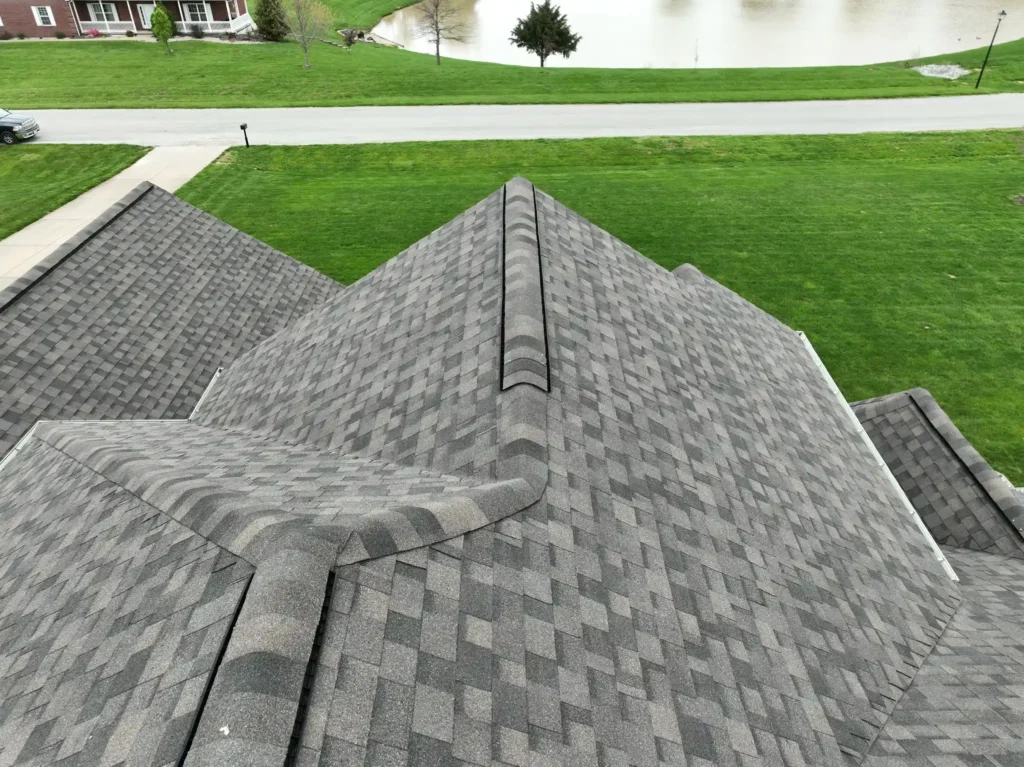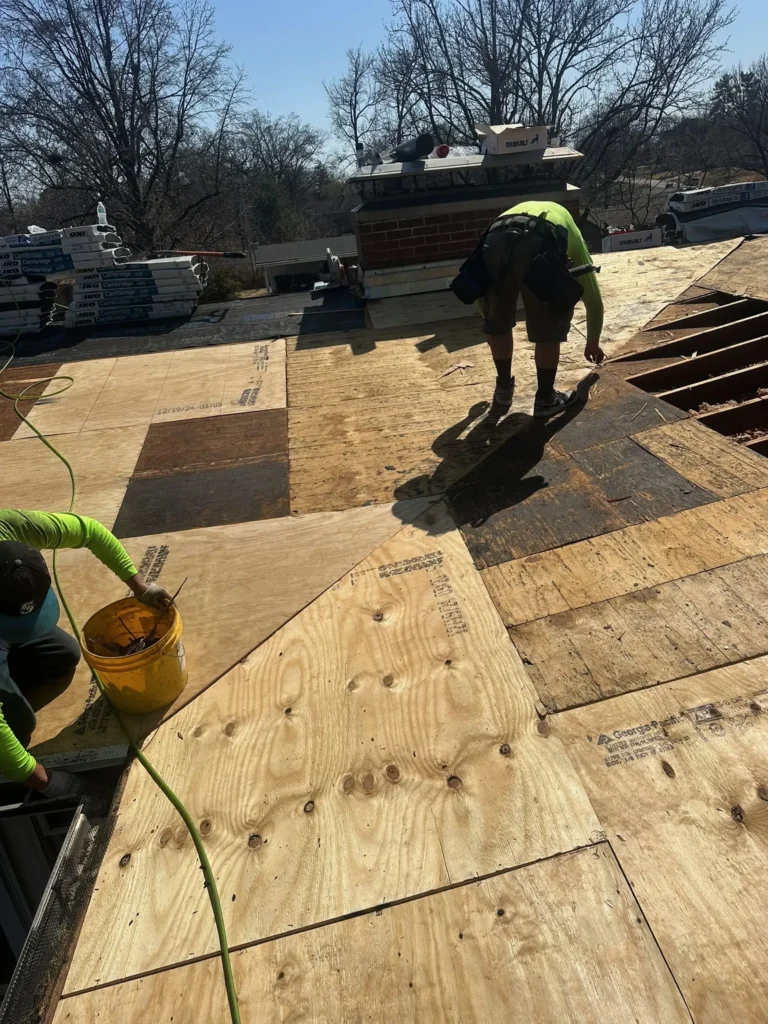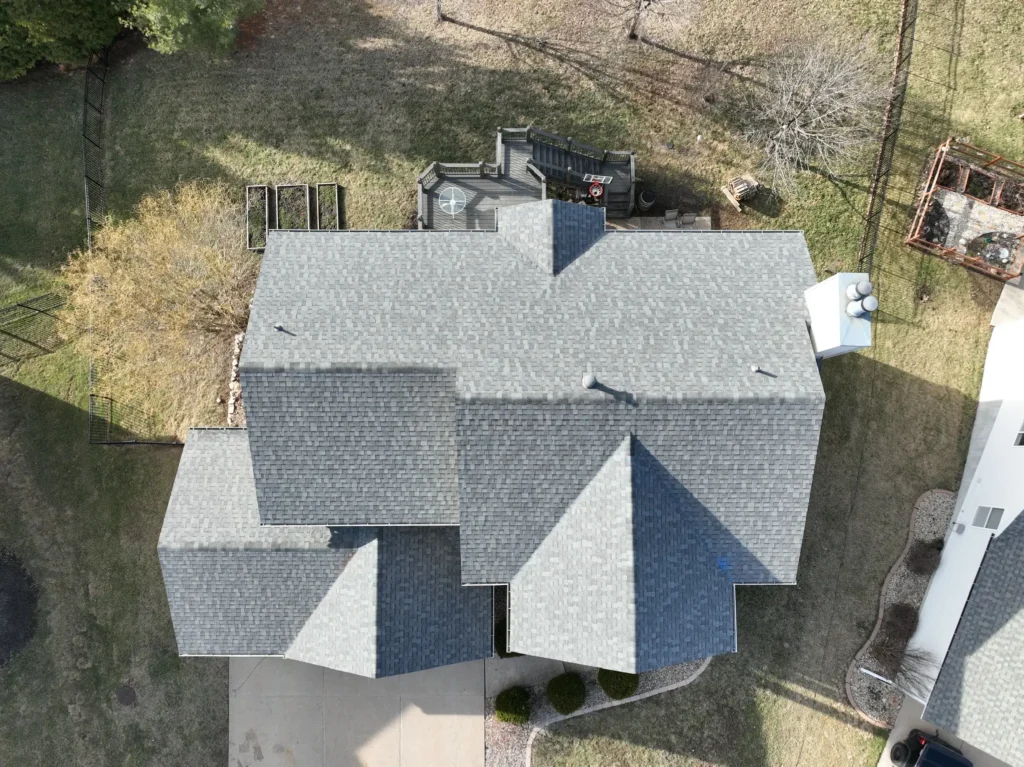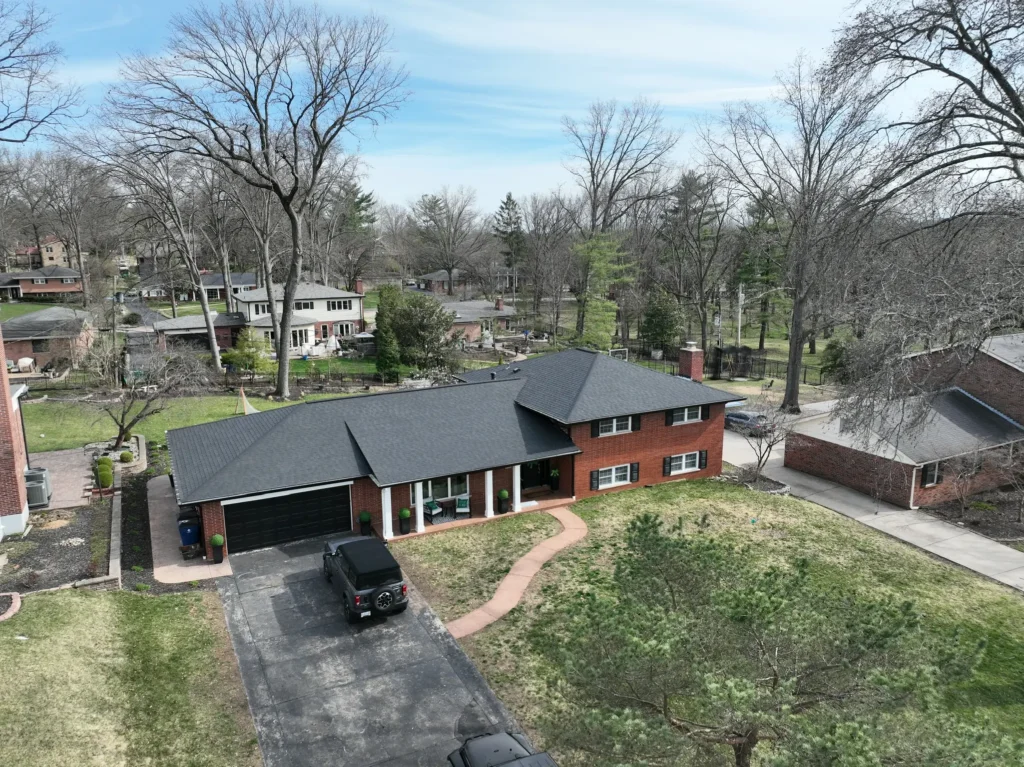Roofing Isn’t Just Shingles
When most people think of a roof, they picture shingles—that top layer you can see from the street. But a roof is more than just shingles. It’s a system of layers, each one playing a specific role in protecting your home from water, wind, temperature swings, and everything else Mother Nature throws at it.
Understanding what’s under your shingles is essential if you’re planning a roof replacement or evaluating storm damage. It helps you make smarter decisions, ask better questions, and avoid being surprised by what your contractor finds once the tear-off begins.
Let’s peel back the layers—literally—and walk through each part of a standard residential roofing system.

The Structure: Trusses or Rafters
At the bottom of it all is the structural framework. This is what holds your roof up and gives it its shape.
- Trusses are pre-manufactured framing systems often used in modern construction. They’re engineered for efficiency, strength, and speed of installation.
- Rafters are built on-site and found in older homes. They’re cut and assembled piece by piece, offering more attic space and flexibility but at higher labor costs.
While these aren’t technically part of the “roofing layers,” they’re essential to your roof’s function and must be solid before any new materials are added. If the structural integrity of these components is compromised, it could affect not just your roof, but the safety of your entire home.
Decking: The Foundation of Your Roof
Roof decking (or sheathing) is the flat wooden surface that sits on top of the trusses or rafters. It provides the base layer for all the other roofing materials.
Common materials include:
- Plywood (traditional, strong, and widely used)
- OSB (Oriented Strand Board) (more affordable and increasingly popular)
Your roofer will inspect the decking during replacement to ensure it’s in good shape. If it’s soft, rotted, or water-damaged, it’ll need to be replaced. Wet decking is often a sign of prolonged leaks, which could mean even deeper problems in the framing below.
We’ve written more on this in our guide to roof decking—including how to tell if yours might be compromised.

Underlayment: Your Roof’s Backup Plan
Think of underlayment as your roof’s second line of defense. It’s installed directly on the decking, under the shingles, and acts as a water-resistant or waterproof barrier.
There are two main types:
- Felt (tar paper): Traditional and affordable, but not as durable as synthetic.
- Synthetic underlayment: More modern, lightweight, tear-resistant, and better at repelling water.
Some areas—especially those prone to ice or heavy rain—also use ice and water shield, a peel-and-stick waterproof membrane installed along roof edges, valleys, and around penetrations like chimneys.
Today’s building codes may require ice and water shield in certain climates. Ask your contractor if your area mandates this upgrade.
Starter Shingles and Drip Edge: Details That Matter
Before the full shingles go on, two critical pieces are installed:
- Starter shingles are narrow strips that create a watertight seal along the roof edges. They prevent wind uplift and keep water from seeping in at the vulnerable eaves.
- Drip edge is a metal flashing that guides water away from the fascia and into the gutters. It prevents water from curling back under the edge of the roof.
Though they’re relatively inexpensive, both components are often overlooked or poorly installed by unqualified crews. Don’t skip them.

Shingles: The Front Line of Defense
Now we get to the part everyone sees: the shingles.
There are several types of shingles, but the most common in residential roofing are:
- Asphalt shingles: Affordable, easy to install, and available in many styles. Lifespan typically ranges from 20 to 30 years.
- Architectural shingles: Thicker, dimensional, and more durable than basic 3-tab shingles. Often rated for higher wind and impact resistance.
- Metal roofing: Becoming more popular due to its long life (40–70 years) and energy efficiency.
- Wood shake, tile, and slate: High-end, distinctive options with unique maintenance and installation requirements.
Each shingle type has pros and cons depending on your climate, budget, and aesthetic goals. Consider talking to your roofer about local performance data or what neighbors in your area are installing.
Flashing and Roof Penetrations: Sealing the Gaps
Wherever there’s something sticking out of your roof—chimneys, vents, skylights—there’s a need for flashing.
Flashing is usually made of metal and is installed around roof penetrations to divert water away from seams and joints. It’s also used in valleys where two roof planes meet.
If flashing is damaged, corroded, or installed incorrectly, it’s one of the most common sources of roof leaks. According to This Old House, flashing failures often go unnoticed until interior water stains start showing up.

Ventilation: The Overlooked Hero
Your roof also needs to breathe. Without proper ventilation, heat and moisture build up in your attic, leading to premature roof aging, mold growth, and higher energy bills.
A balanced ventilation system includes:
- Intake vents (usually in the soffits)
- Exhaust vents (like ridge vents or roof turbines)
Proper ventilation doesn’t just help your roof—it can extend the life of your HVAC system and improve indoor comfort, especially during peak summer and winter months.
According to the U.S. Department of Energy, a well-ventilated attic can significantly reduce cooling costs and prolong roof lifespan.
Optional Add-Ons: Upgrades Worth Considering
If you’re replacing your roof, it’s also a good time to consider:
- Radiant barriers: Installed under the decking to reflect heat and reduce attic temperatures.
- Insulation upgrades: Better insulation can work with ventilation to improve home efficiency.
- Gutter replacement: If your gutters are failing, this is the time to do both.
- Cool roofing materials: Some shingles reflect more sunlight than others, keeping your attic cooler and potentially lowering energy bills.
Some energy-efficient options may even qualify for local utility rebates or tax credits—check with your contractor or utility provider.
Why All These Layers Matter
Each layer of a roof serves a unique purpose, and skipping or cheapening one can impact the whole system.
For example, great shingles won’t perform well over rotted decking. And perfect decking won’t stay dry without quality underlayment. It’s all about building a layered defense.
When storms hit, every layer works together to protect your home. The more you understand them, the better equipped you are to care for your roof—and make informed decisions when it’s time to replace or repair.
Need Assistance with Your Claim?
Brody Allen Exteriors can help guide you through the process and ensure your roof is repaired to the highest standards. Many of your neighbors have successfully navigated their insurance claims with our expert assistance.
How to Know If Your Roofing System Needs Help
Some warning signs include:
- Water stains on ceilings
- Missing or curling shingles
- Roof sagging
- High energy bills
- Visible wood rot around the eaves
Other subtle symptoms include musty attic smells, inconsistent room temperatures, and excessive shingle granules in your gutters.
An experienced contractor can perform a full inspection and let you know which layers are still in good shape—and which need attention.
Final Thoughts: Your Roof Is a System—Not Just a Surface
When you invest in a new roof, you’re not just buying shingles. You’re investing in a layered system designed to protect your home, boost energy efficiency, and withstand the elements for decades.
At Brody Allen Exteriors, we don’t just replace roofs—we educate homeowners so they know what’s going on above their heads. If you want to learn more about what makes a high-performance roof or get an honest inspection, reach out to us.

Stephen Maassen
MISSOURI'S BEST
Roofing Professionals You Can Trust
When you choose Brody Allen Exteriors, you're choosing a team that's dedicated to protecting homes. We live and work in this community, and we're here to ensure your roof is strong, durable, and built to last.



